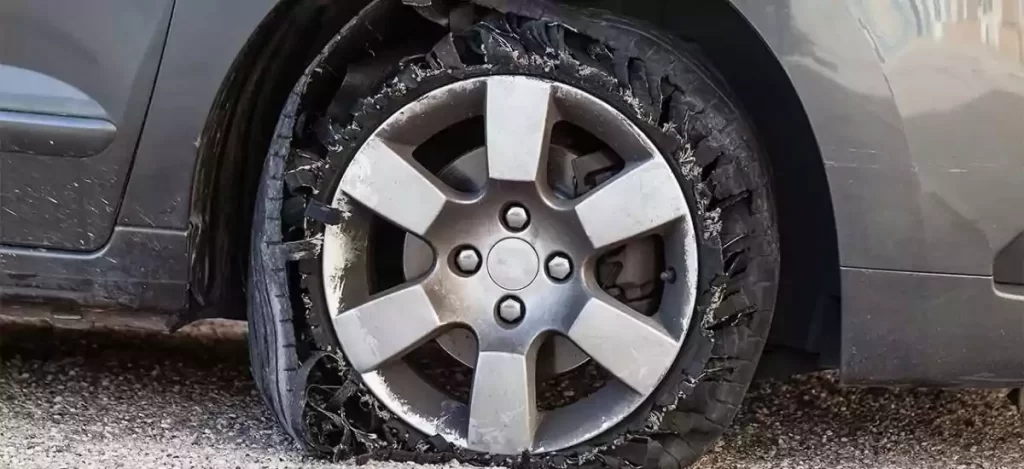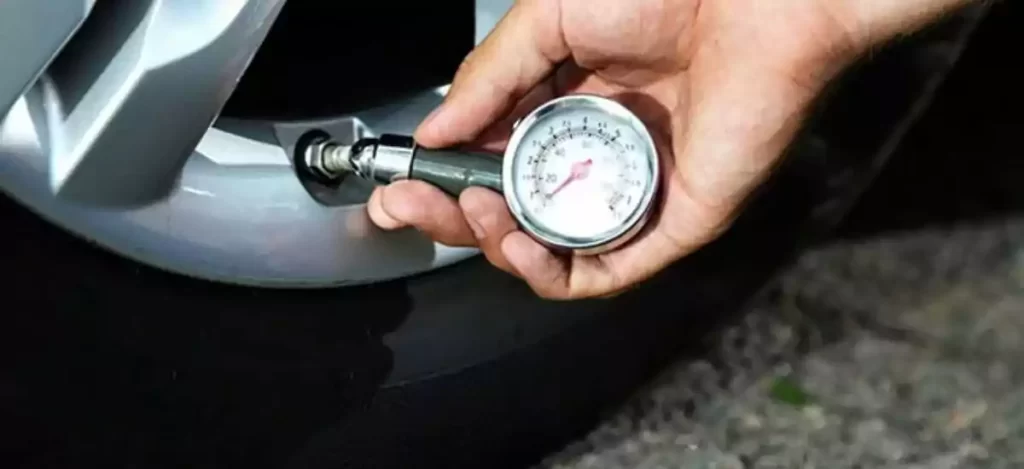When the tires are cold, the manufacturers of most passenger automobiles advise keeping between 32 and 35 pounds of pressure in them. It is important to check the air pressure in your tires while they are cold because when the tires roll down the road, heat is generated due to friction between the tires and the road. This heat causes an increase in both temperature and air pressure.
Newer automobiles often include a label inside the driver’s door that lists the appropriate tire pressure. It is possible to obtain the specifications in your vehicle’s owner’s handbook if there is no door label. Tire pressure should be between 32 and 35 psi while the tires are cold. Ensure the automobile has been resting for at least a few hours or overnight for the most accurate reading. In this article, you will learn how much psi a tire should have and the quick and easy ways to restore proper tire inflation.
How Much PSI Does A Tire Need?
The appropriate tire pressure is always shown on a placard inside the driver’s door of five-year-old or newer vehicles. If there is no label on the door, the specifications are often included in the owner’s manual. When the tires are cold, the manufacturers of most passenger automobiles advise keeping between 32 and 35 pounds of pressure in them.
Overfilling Tires Leads To
When tires are over-inflated, it causes the sidewalls and the tread become more rigid than they would normally be. It might cause the tire to wear unevenly and reduce its traction and performance. The tire’s contact patch will decrease if the pressure is raised above what is advised.
When your tires are “cold,” which might mean first thing in the morning or after the vehicle has been parked for a few hours, you should follow these procedures to acquire the most accurate reading possible for your tire pressure and inflation. Putting the final amount of air into heated tires might lead to over-inflation. In a similar vein, measuring the tire pressure while the tires are already warm might give a false impression that they already have too much air pressure.

- Find the stem that connects the valve to your tire.
- Remove the cover by turning it counterclockwise, and you will reveal a metal pin.
- You can find a little nipple on the rear of the air pressure tool used to release air pressure.
- You can find this nipple by looking at the back of the tool.
- Put some serious pressure on the pin using this tool or one quite similar. It will cause the air in the tire to escape.
- Check the pressure of your tires at regular intervals as you let the air out of them until you reach the suggested PSI (pounds per square inch).
- Tires lose pressure due to routine use; therefore, they check their pressure often. Check your regular and spare tires.
- Numerous automobiles are equipped with tire-pressure monitoring systems, which, in the event of serious underinflation, may illuminate a warning light on the dashboard labeled “TPMS.”
- On the other hand, the symbol on the dashboard won’t light up until the tire pressure is at least 25 percent lower than what the manufacturer considers optimal.
Also Read :
5 Quick & Cheapest Ways to Fix Catalytic Converter,
What’s Causing Your Car to Squeal? Consider The Following 5 Reasons
Tire Air Pressure Tips
An excessive amount of air pressure may also cause the tire’s contour to become misshapen, resulting in less traction and greater wear and tear along the center of the tire. Tires routinely driven with a higher than recommended pressure may experience accelerated wear.
- According to RMA, only 15% of drivers know how to check tire pressure. The DOE says that properly inflated tires may boost fuel economy by 3 percent. A 1 psi reduction in pressure on all four tires reduces the gas economy by 0.2%. Well-inflated tires are safer, lasts longer, and save money.
- Maintain tire pressure. Monthly and before long trips. Check cold tire pressure (car has not been driven for at least three hours) in the automobile owner’s handbook or on the gas tank lid or driver’s side door edge or door post. Front and rear axle tire pressure must be the same. Close valve covers securely to avoid dust, grime, and leakage. Replace missing valve caps.
- Many drivers carry a spare tire. Each month and before a road trip, check your spare for adequate tire pressure and visual abnormalities. If you’ve had your spare tire for a while, it may require replacing.
- Hydroplaning and skidding are prevented by tread depth. 2/32″ minimum tread depth (1.6 mm).
- Advanced and atypical wear may limit tire traction in bad weather. Check tires for uneven wear, high and low spots, and damage. Check sidewalls for gouges, cuts, bulges, and other anomalies.
- A pothole or curb may damage tires by throwing the front end out of alignment. Misaligned front or rear wheels may cause uneven and quick treadwear. A tire dealer can remedy this. Check the alignment as directed in the owner’s handbook or if you feel a “pulling” or vibration.
- Rotate tires every 5,000-8,000 miles unless your owner’s handbook says otherwise. Tire rotation helps consistent wear and extends tire life. Have a tire dealer examine for misalignment, imbalance, or other mechanical issues before rotating if you see uneven wear.
- According to the RMA, every 200lbs of added weight affects fuel efficiency by 1 mpg. Owner’s manuals list a vehicle’s maximum load. Avoid potholes, debris, quick stops and starts, and curbs. These items may damage your tires, ruining your trip.
What Do You Use To Measure Tire Pressure?
Items needed to measure tire pressure
- Tire pressure gauge
- Air compressor
- Composer and notepad

You have the option of using a digital or traditional tire pressure gauge. Both are commonly available at shops that sell auto components. Portable air compressors that may be powered by your vehicle’s battery or a 12v power connector are sold at many auto parts shops.
You can also use the air compressor located at petrol stations. Utilizing one of these will typically cost between $0.50 and $1.00.
TPMS
We at the Marine Chevrolet repair facility are ready to assist you with finding answers to any queries you may have if you see the TPMS warning light illuminated on your dashboard and are curious about what it indicates. The acronym refers to Tire Pressure Monitoring System, and it monitors the air pressure in your tires by using sensors that measure tire pressure.
FAQS-
Q1. Should all 4 tires have the same psi?
Ans. Every pressure needs to be the same. The front and rear tire pressures must be the same to avoid damage to the drive system if your vehicle has all Wheel Drive or Four Wheel Drive.
Q2. How often should I put air in my tires?
Ans. After being inflated, tires lose around 1 PSI every month. As a result, checking the pressure of your tires once per month may assist you in ensuring that they are maintained at the appropriate level. Even though you won’t notice as many warning lights for low tire pressure during the summer, you should still check them often.
Q3. What is the lowest tire pressure you can drive on?
Ans. Twenty pounds per square inch (psi) is the absolute minimum tire pressure legal for driving. However, even that is not advised. Going on a tire with less than 20 pounds of force is regarded as a flat tire, and doing so might cause harm to your vehicle. If the pressure is this low, you need to add air to your tires. The recommended range of tire pressures is typically between 32 and 35 pounds per square inch (psi).
Q4. What happens if tire pressure is too high?
Ans. An excessive amount of air pressure may also cause the tire’s contour to become misshapen, resulting in less traction and greater wear and tear along the center of the tire. Tires that are routinely driven with an air pressure that is higher than recommended may experience accelerated wear.
Conclusion
A vehicle’s tires should always be inflated to the appropriate pressure set by the manufacturer and should never exceed the maximum pressure stated on their sidewalls. It is advisable to keep your tires inflated to their recommended pressure and rotate at regular intervals for maximum performance and longevity. I hope you are now.
Also Read :
How Many Axles Do Cars Have?,
How Many Quarts of Transmission Fluid You Should Add to Car

Leave a Reply